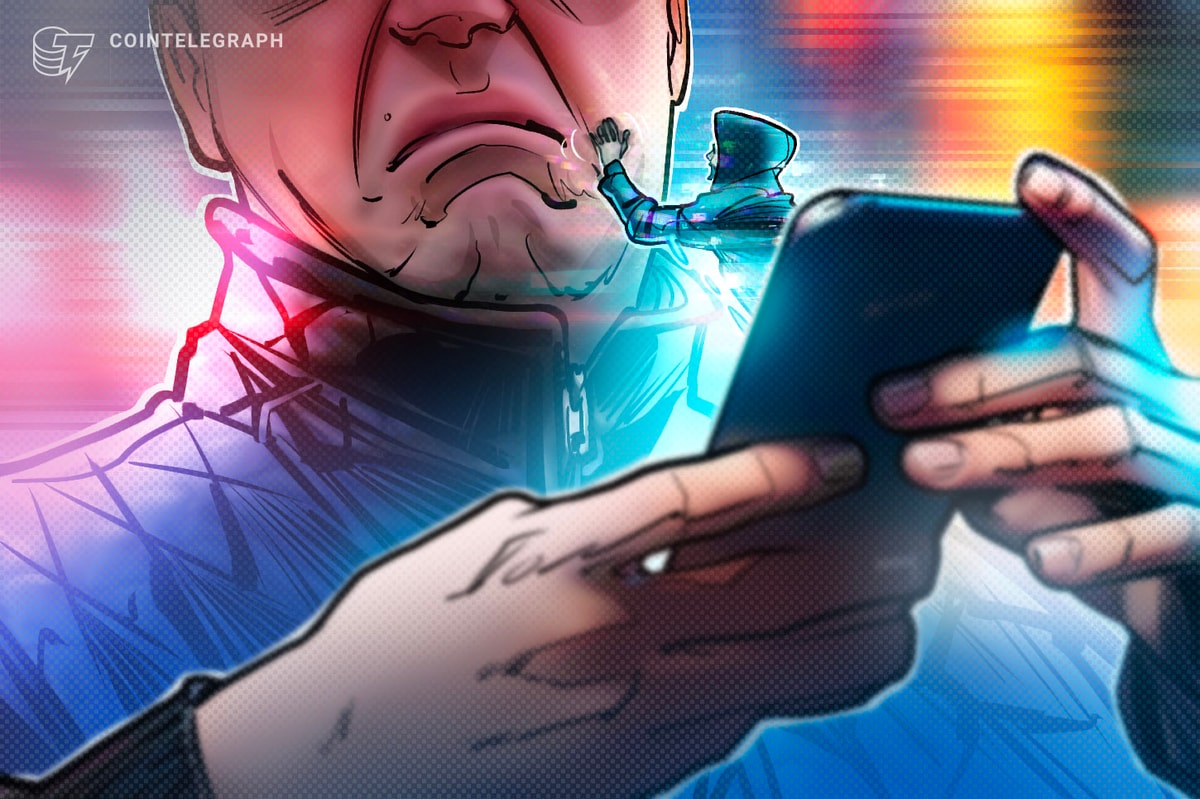In April 2022, the Tron network launched USDD, a token pegged to the U.S. dollar, as an “over-collateralized stablecoin,” meaning its likelihood of slipping below $1 should be lower due to excessive reserves backing its valuation.
USDD stablecoin slips below $1 peg
But it was not enough to keep USDD’s price anchored to $1 on Nov. 8 when some whales dumped over 11 million USDD tokens to seek exposure in rival stablecoins Tether (USDT) and USD Coin (USDC). A day later, USDD’s price fell to as low as $0.96, followed by a modest recovery to $0.98 on Nov. 10.

The selling pressure was visible more broadly in the USDD liquidity pool on Curve’s decentralized finance protocol. As of Nov. 10, the pool was heavily imbalanced, holding nearly 82.50% in USDD and the rest in USDT, USDC, and DAI stablecoins.
Tron founder Justin Sun speculates that Alameda Research, a crypto hedge fund headed by FTX’s Sam Bankman-Fried, could be the whale dumping its USDD holdings to avoid insolvency. Alameda’s balance sheet reportedly was 50% FTT (FTT), FTX’s native token that has recently fallen more than 90%.
I think probably Alemeda just sold their USDD to cover the liquidity of ftx exchange. The pool currently is back with a healthy rate. pic.twitter.com/oSIzUNqE0Z
— H.E. Justin Sun (@justinsuntron) November 9, 2022
Miscalculated collateral reserves
USDD is issued by Tron DAO Reserve (TDR), which also serves as the custodian of its collateral. TDR is primarily responsible for selling the collateral to maintain USDD’s peg in the event of a sell-side shock.
In theory, USDD appears sufficiently backed by a $2-billion pool of crypto collateral in the form of Bitcoin (BTC), Tron (TRX), and USDC, with the reserves reportedly outweighing the stablecoin supply by over 283%.

But there’s a catch.
Currently, almost all the stablecoin collateral worth in TDR’s reserve wallets are staked and earning yields in JustLend, the largest lending protocol in the Tron ecosystem by total-value-locked (TVL). Meanwhile, 99% of TRX collateral is locked inside a “staking governance” contract.
TDR also appears to be incorrectly including burnt TRX worth over $725 million as collateral. Overall, that leaves the DAO with about $600 million worth of USDC and $236 million worth of BTC in its liquefiable reserves.
In other words, an almost 113% collateral ratio versus the 283% boasted.
Bitcoin, TRX prices slide
USDD’s collateral ratio could fluctuate further as its reserve assets, BTC and TRX, undergo price declines.
Notably, BTC’s price has plunged by more than 22% week-to-date to around $16,500 in a crypto market meltdown led by the Alameda-FTX fiasco. On the other hand, TRX wiped approximately 12% off its valuation in the same period, trading at around $0.05 on Nov. 10.

The Tron token now eyes a break below its support long-standing support confluence, comprising its 200-week exponential moving average (200-week EMA; the blue wave) near $0.052 and its 0.236 Fib line near $0.055.
This may push TRX on an extended decline toward the $0.022-$0.030 range (marked in red in the chart above). This area was instrumental as a consolidation channel in August 2020-January 2021 and January 2019-July 2021.
Furthermore, it served as support between February and November 2018.
Related: Buying Bitcoin ‘will quickly vanish’ when CBDCs launch — Arthur Hayes
At the same time, Bitcoin has entered the breakdown phase of its prevailing inverse-cup-and-handle pattern, now eyeing $14,000 as its primary downside target.

The views and opinions expressed here are solely those of the author and do not necessarily reflect the views of Cointelegraph.com. Every investment and trading move involves risk, you should conduct your own research when making a decision.
Read More: cointelegraph.com









 Bitcoin
Bitcoin  Ethereum
Ethereum  Tether
Tether  XRP
XRP  Solana
Solana  USDC
USDC  Dogecoin
Dogecoin  Cardano
Cardano  TRON
TRON  Lido Staked Ether
Lido Staked Ether  Wrapped Bitcoin
Wrapped Bitcoin  Toncoin
Toncoin  LEO Token
LEO Token  Chainlink
Chainlink  Stellar
Stellar  USDS
USDS  Wrapped stETH
Wrapped stETH  Avalanche
Avalanche  Sui
Sui  Shiba Inu
Shiba Inu  Hedera
Hedera  Litecoin
Litecoin  Polkadot
Polkadot  MANTRA
MANTRA  Bitcoin Cash
Bitcoin Cash  Bitget Token
Bitget Token  Ethena USDe
Ethena USDe  WETH
WETH  Binance Bridged USDT (BNB Smart Chain)
Binance Bridged USDT (BNB Smart Chain)  Pi Network
Pi Network  Hyperliquid
Hyperliquid  Wrapped eETH
Wrapped eETH  WhiteBIT Coin
WhiteBIT Coin  Monero
Monero  Uniswap
Uniswap  Aptos
Aptos  Dai
Dai  Pepe
Pepe  NEAR Protocol
NEAR Protocol  sUSDS
sUSDS  OKB
OKB  Coinbase Wrapped BTC
Coinbase Wrapped BTC  Gate
Gate  Tokenize Xchange
Tokenize Xchange  Cronos
Cronos  Mantle
Mantle  Ondo
Ondo  Ethereum Classic
Ethereum Classic